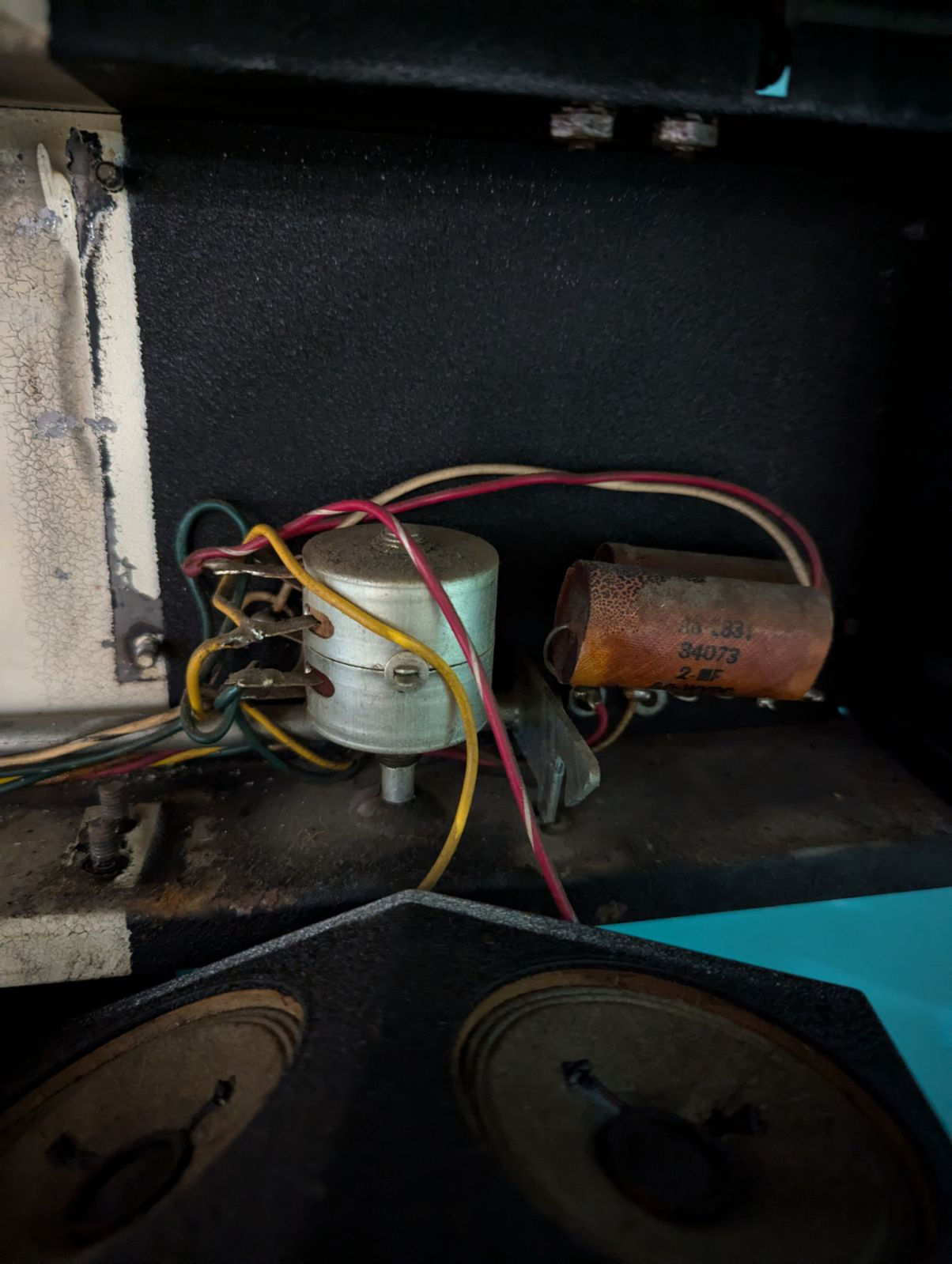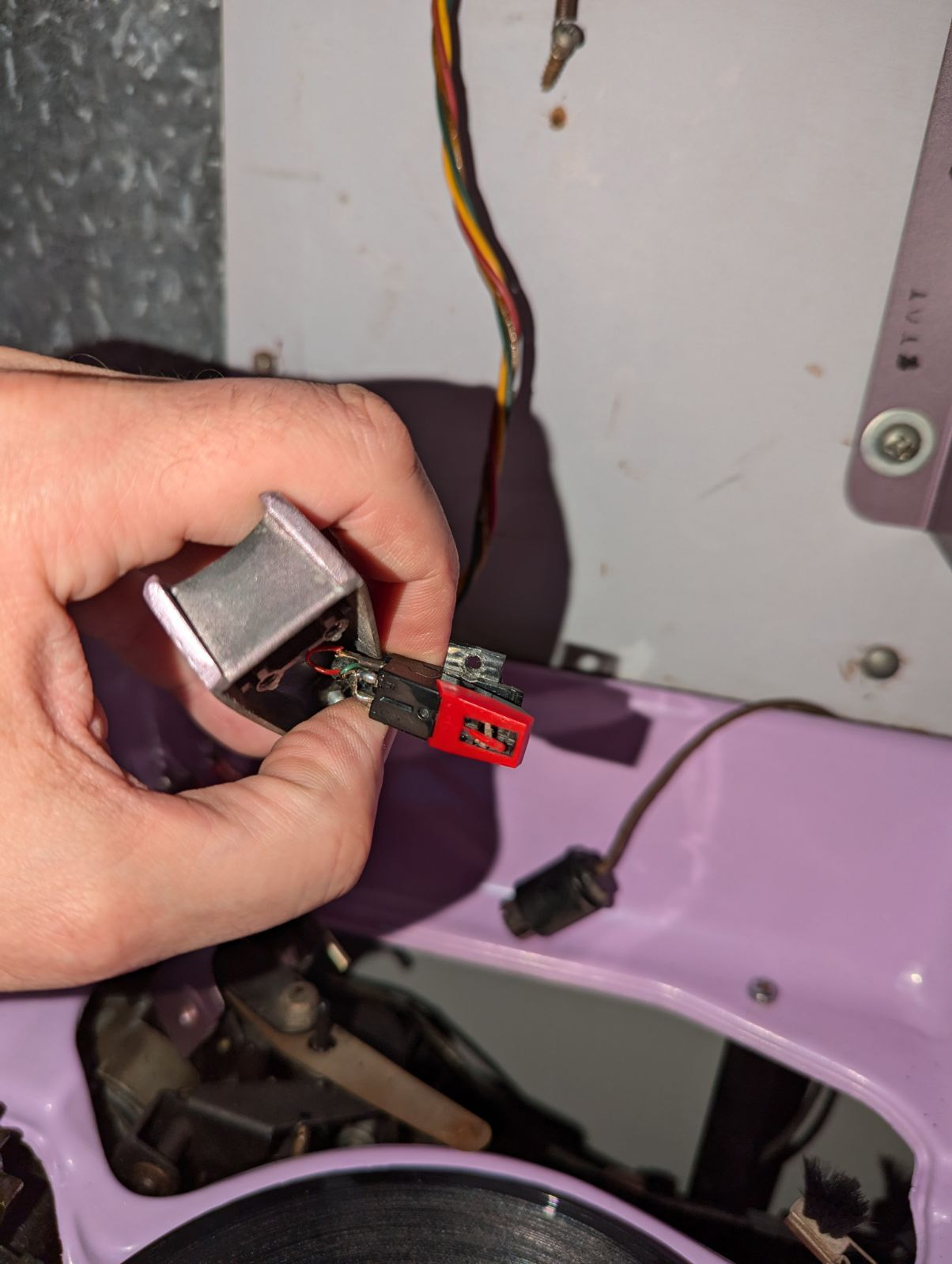brett
New Member

Posts: 10
|
Post by brett on Sept 3, 2024 22:12:10 GMT
Hello I'm Brett and new to the forum. I've owned a 488 for about 5 years but have recently picked up a 404s. It was not working and to nobody's surprise, it sorely needed lubrication before both the gripper and magazine motors could do their thing. I'm happy to discover that everything mechanical appears to work. The issue now is that it sounds terrible. The very first record selected on power up sounds half-decent for about 3 seconds and then it soon sounds like the record is playing underwater eventually to the point you can barely recognize the song playing. I have never had anything with vacuum tubes before and I am wondering what is the best angle of attack to sort out the sound quality here. My assumption would be to first order and install a cap-kit but from there I'm lost. I was thinking of picking up some DeOxit and applying that to any switches or knobs as well. I'm unsure if the speakers are ok but they all sound equally horrible so I assume it's the incoming sound to start with. I welcome any and all suggestions please in figuring out a troubleshooting approach.
My manual btw is on order! Also, when the selection arm is moving after selecting a track... the buzz sound is super loud! Is that normal?
Thanks,
Brett
|
|
|
|
Post by jukenorman on Sept 4, 2024 15:17:10 GMT
Hi Brett,
There is likely to be a substantial amount of work required to refurbish your amplifier to its former glory - something that can't be adequately covered in a single post on a forum. Whether you do it yourself (big learning curve!) or send it out to a competent technician, it is likely to consume a fair chunck of money. With that in mind, the best thing you can do for now is to stop using that amplifier in order to prevent further damage - like blown output transformers for example.
Norman.
|
|
brett
New Member

Posts: 10
|
Post by brett on Sept 4, 2024 15:38:55 GMT
Thanks Norman appreciate that. My previous electronic experience was working on Arcade boards and monitors so I do have experience replacing components on those. I generally followed troubleshooting flowcharts however to accomplish this. Do you have a recommendation on a more appropriate forum for help with this? If I cannot find such a place I will bit the bullet and pay to have it fixed.
|
|
|
|
Post by jukenorman on Sept 4, 2024 16:54:10 GMT
Well at least you do have some electronics experience, so that's a start! How I started many years ago was by getting a "Basic Electronics" book published around 1960 where all the theory was vacuum tube based and I still have it! I googled "repairing vintage vacuum tube amplifiers" and that brought up heaps of links. There were some Youtube videos that I didn't look at (too time consuming!) but there was good information available at diyaudio.com and audiokarma.org although they may have been slanted more towards hi-fi amps where probably vintage guitar amps are more akin to what we find in jukeboxes, specifically regarding how the output sections are configured. Have a look at these and see how you feel about them?
Sending your amp out for refurbishment can seem expensive but if doing it yourself and you get bogged down in a problem that requires specialist test equipment, that could work out to be even more expensive particularly if it's just a one off!
Norman.
|
|
brett
New Member

Posts: 10
|
Post by brett on Sept 4, 2024 17:20:16 GMT
Thanks so much! I guess what I would like to attempt first is a replacement of the caps since I am very comfortable doing so. In your opinion is it a safe first step? If that does not fix my issues, I would likely then look into having someone qualified take a look as I do not have test equipment for the tubes etc and this is absolutely a one-off lol.
|
|
|
|
Post by jukenorman on Sept 4, 2024 19:46:33 GMT
It's not easy to provide a generalisation but here's a stab at a fairly brief one. Capacitors - replace all electrolytics and coupling capacitors as a minimum. A quality capacitor kit is an option. Resistors - replace anode (referred to as plate in US) resistors, 6973 bias resistors and possibly the feedback resistors as a minimum. You could maybe also check the values of the dropper resistors in the power supply. Hopefully at that, you shouldn't be far away if you also clean the switches and pots. The remaining concern is whether the vacuum tubes themselves are good but since it's a stereo amp, you might be able to check them by substitution.
Norman.
|
|
brett
New Member

Posts: 10
|
Post by brett on Sept 4, 2024 20:35:26 GMT
This is so helpful thank-you. I figure I can make basic component replacements easily... and then if things are still wonky, I have the option to take my tubes to a person who does tube testing here locally.
|
|
brett
New Member

Posts: 10
|
Post by brett on Sept 18, 2024 7:08:54 GMT
So I've installed the cap kit from Bill Bickers. That was an interesting journey. I had no idea about those metal can style caps that are actually multiple capacitors in one. Using the caps in the kit I constructed the equivalent under the hood, leaving the large caps mounted to look original. The original candohm resistor had been replaced sometime in the past with a powered resistor but a 0.1 MFD (I think called a bypass cap) in parallel with this resistor was missing. After I added thermal paste behind this power resistor which clearly hadn't ever been done, I added that missing cap back in (was in my cap kit of course). Things are already sounding better with this work done. I have not replaced any resistors yet as per your suggestion Norman. The reason for this is I need to still do more research and determine which ones exactly are the plate, 6973 bias, and feedback ones. The cap kit did not include replacements for these crusty old caps in the optional 'stereo kit' which my unit has.   They are 2 MFD 50V. I've never ordered my own caps before (always used to get kits for my arcade work). Would these be suitable replacements for these two caps? They'd be WAY smaller than these originals: www.digikey.ca/en/products/detail/vishay-sprague/TVA1301/5612833Also, I picked up some deoxit-5 and cleaned the pots and switches in the amp. The amp has a dual volume pot that looks exactly like the dual "L" pad pot in the stereo kit next to the caps. Unlike the other pots in the amp, this style doesn't seem to really have any openings to spray the deoxit into. How does one go about cleaning/lubricating this style of pot? I know when I try to adjust this one in the stereo kit, all sound pretty much cuts out except for a pretty specific position... so I know it's not performing well and could also be partially responsible for the continued crappy sound out of the tweeters. I also took a look at the stylus. I found some still sealed ones behind the coin box and when i tried to install one, I discovered that the original cart had been swapped for one from japan that seems to have no brand name on it. It's soldered right to the wires as well which I've heard is bad. Is it recommended that I undo this change and install an equivalent cart to the Astatic 15D? The all plastic red stylus in this thing can't be very good quality (and I'll bet it's ancient too).  Thanks, Brett |
|